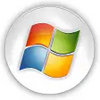Comprehensive monitoring of your hard drive performance
Comprehensive monitoring of your hard drive performance
Vote: (9 votes)
Program license: Free
Developer: Berlios
Version: 0.8.6
Works under: Windows
Vote:
Program license
(9 votes)
Free
Developer
Version
Berlios
0.8.6
Works under:
Windows
Pros
- Graphical user interface enhances user interaction with SMART data.
- Extensive performance stats and health indicators for in-depth analysis.
- Compatible with a wide range of ATA drives (both PATA and SATA).
- Can help preemptively identify drive issues, reducing the risk of data loss.
Cons
- Can be complex and technical for average users to fully understand.
- Does not support non-ATA drives, limiting its applicability.
- Interpreting SMART data still requires technical knowledge or additional research.
Robust Hard Drive Health Monitoring Tool
GSmartControl serves as a comprehensive tool for scrutinizing and supervising the health and integrity of hard disk drives. As an interface for the underlying Smartctl command-line utility, GSmartControl leverages SMART (Self-Monitoring, Analysis, and Reporting Technology) to provide a more user-friendly platform for analyzing hard drive data and conducting various tests to assess drive performance and predict potential failures.
Feature-Rich Graphical User Interface
At the application's core is its graphical user interface, which simplifies the task of inspecting SMART data. The GUI presents information in an organized fashion, allowing users to swiftly navigate through different sections to review attributes or log data. While the typical SMART command-line can present a steep learning curve for many users, GSmartControl attempts to make the process less daunting, although understanding the depth of SMART data still requires a degree of technical knowledge.
Compatibility and Device Support
One salient point about GSmartControl is its interaction with ATA drives, which include both PATA and SATA types. The utility efficiently recognizes and works with these drives, given that they are SMART-enabled. However, it is important to note the constraints regarding the drive types supported. Users with non-ATA drives would need to seek other solutions or wait for future updates in hopes of broader compatibility.
Detailed Performance Stats and Health Indicators
GSmartControl excels in presenting detailed diagnostics and performance statistics. Indicators such as Reallocation Event Count, Spin-Up Retry Count, and Offline Uncorrectable sectors are readily available for expert analysis. This data is invaluable for IT professionals or enthusiasts with the requisite skills to interpret such metrics, as it can signal the onset of potential hardware issues, allowing preemptive actions to be taken, such as backing up data or replacing the drive before catastrophic failure occurs.
User Experience and Interpretation Challenges
The advantage of using GSmartControl over traditional SMART command-line interfaces comes with the territory of enhanced readability and organization of data. However, the utility does not diminish the complexity of SMART data. For the average user, the information presented can still appear as an assortment of technical jargon. As such, users without a technical background may still find themselves at a crossroads when trying to decipher the health status of their drives.
Final Thoughts
GSmartControl stands out as an accessible, albeit still technical, tool for hard drive analysis. It bridges the gap between advanced SMART capabilities and users who need a more approachable method to monitor their hard drive's health. While it does a commendable job of presenting data, the value of the information gleaned hinges on the user's ability to understand and interpret SMART metrics effectively.
Pros
- Graphical user interface enhances user interaction with SMART data.
- Extensive performance stats and health indicators for in-depth analysis.
- Compatible with a wide range of ATA drives (both PATA and SATA).
- Can help preemptively identify drive issues, reducing the risk of data loss.
Cons
- Can be complex and technical for average users to fully understand.
- Does not support non-ATA drives, limiting its applicability.
- Interpreting SMART data still requires technical knowledge or additional research.




